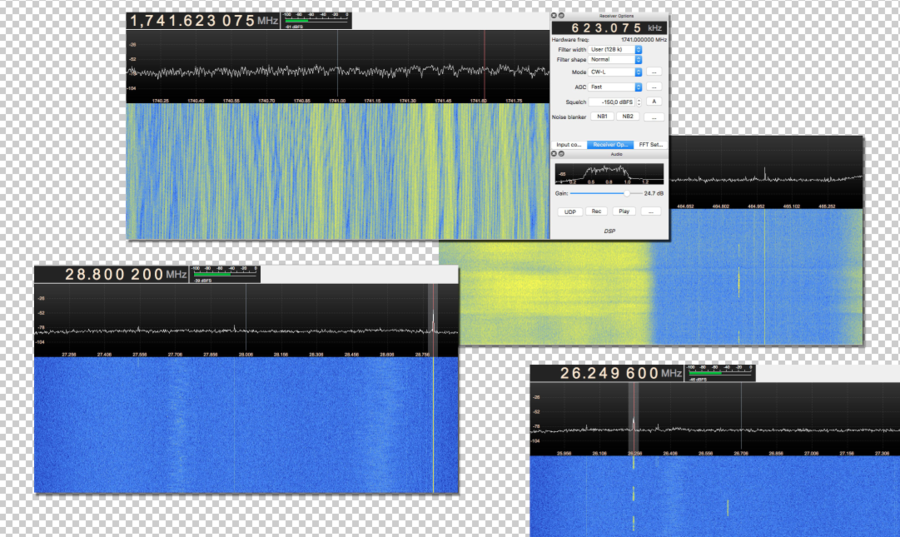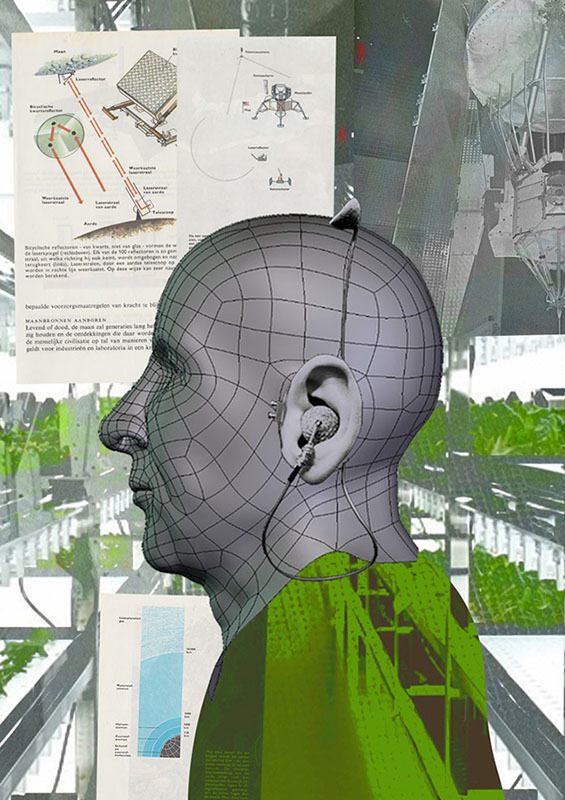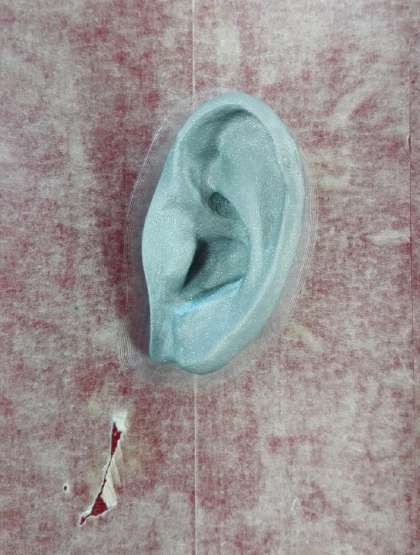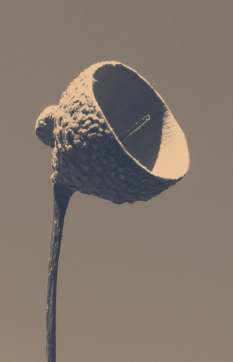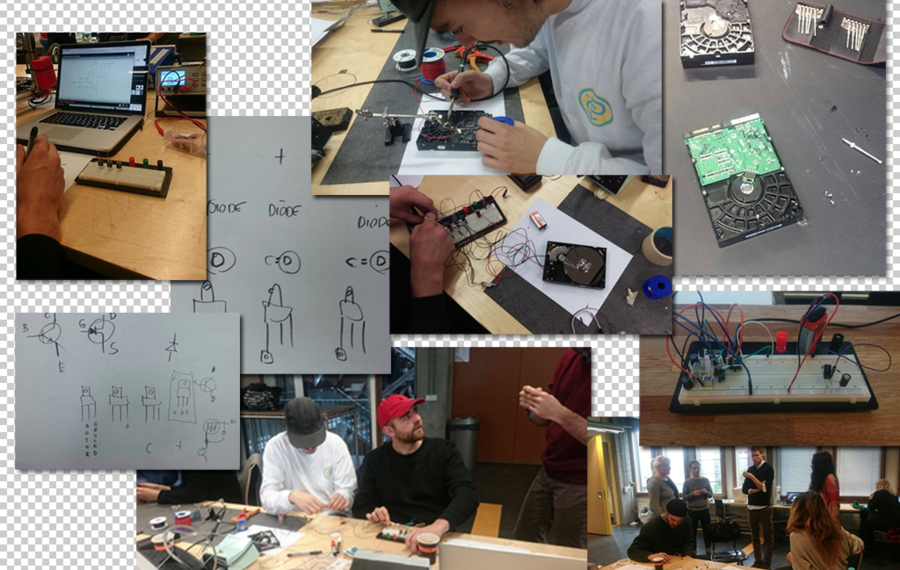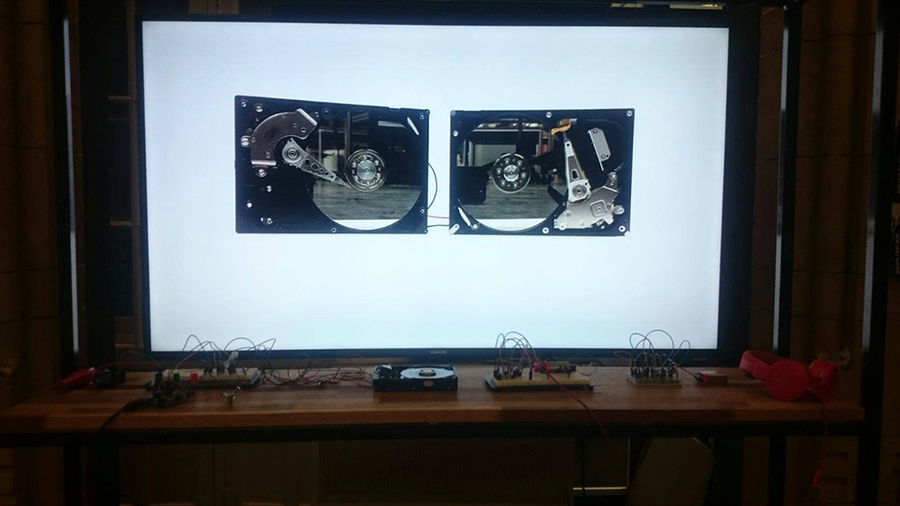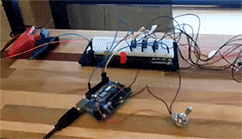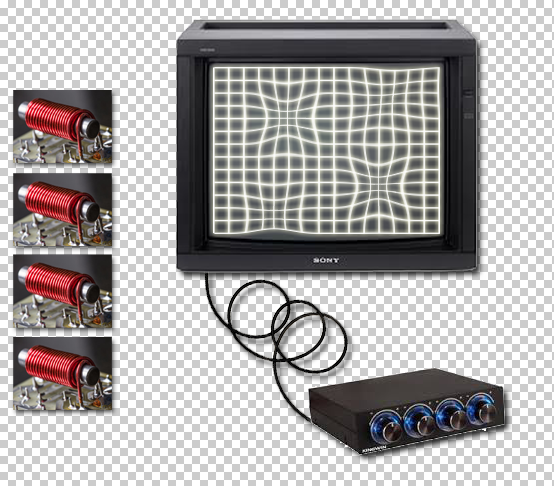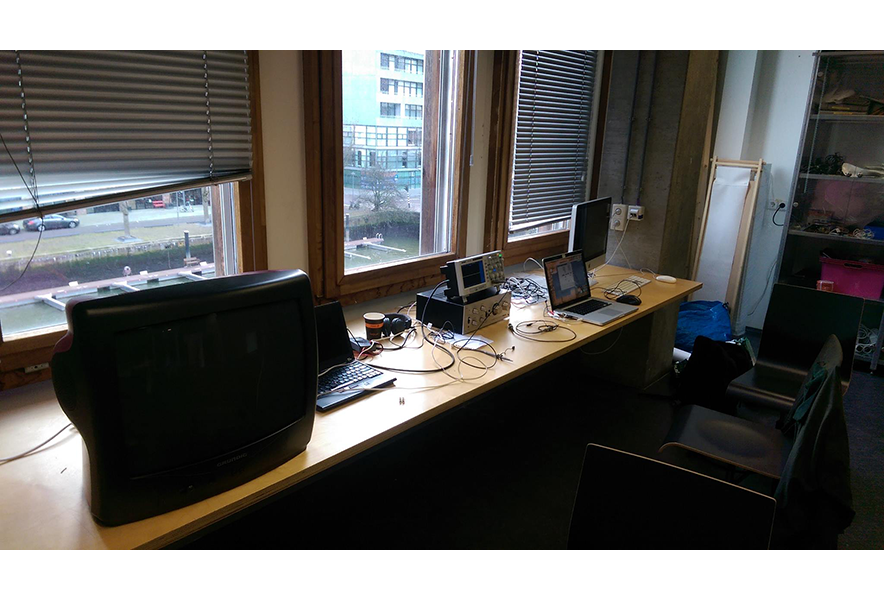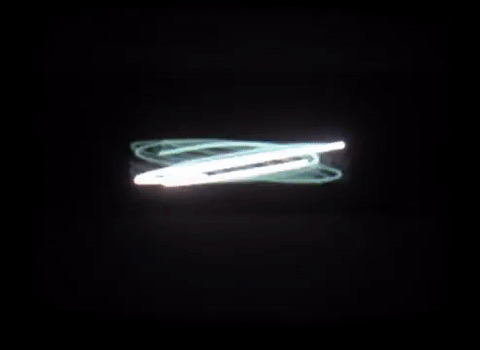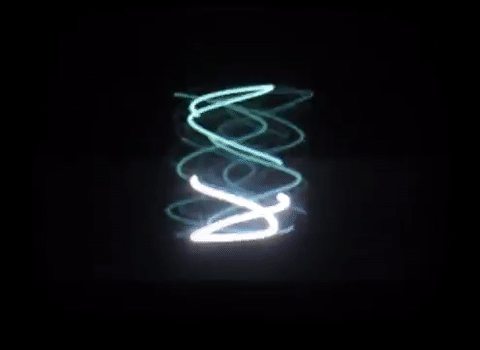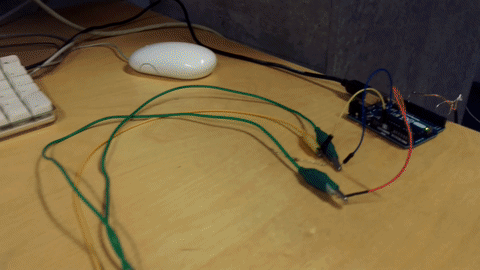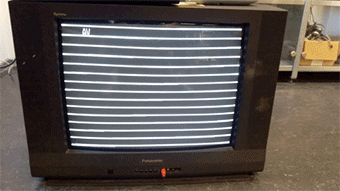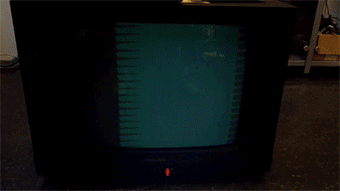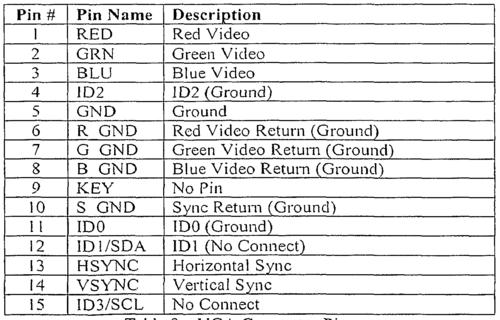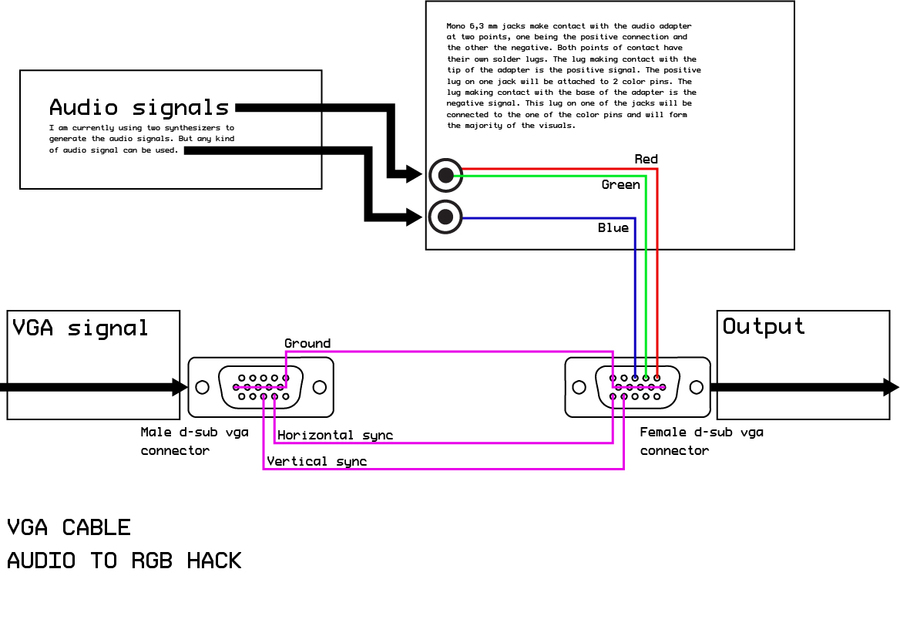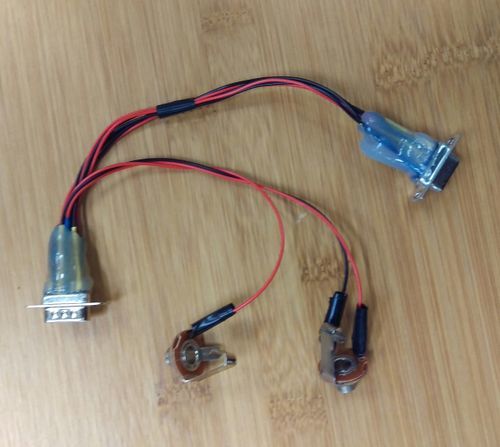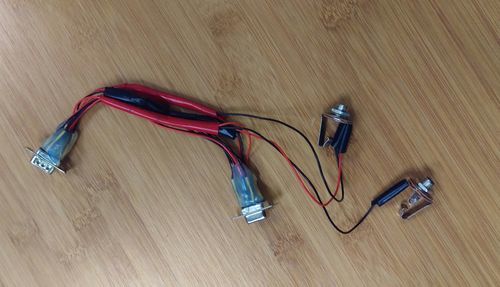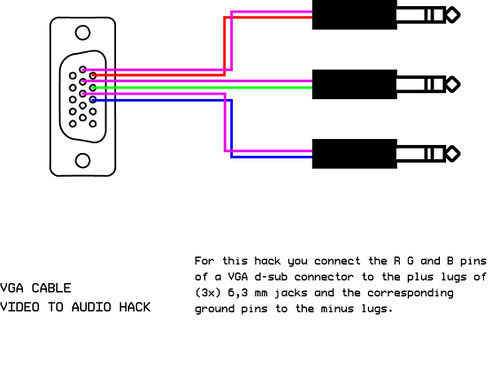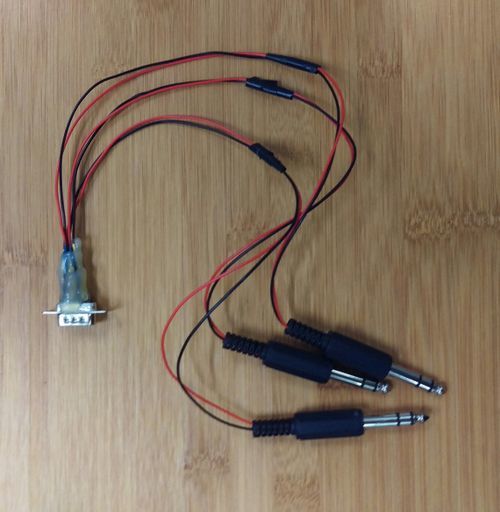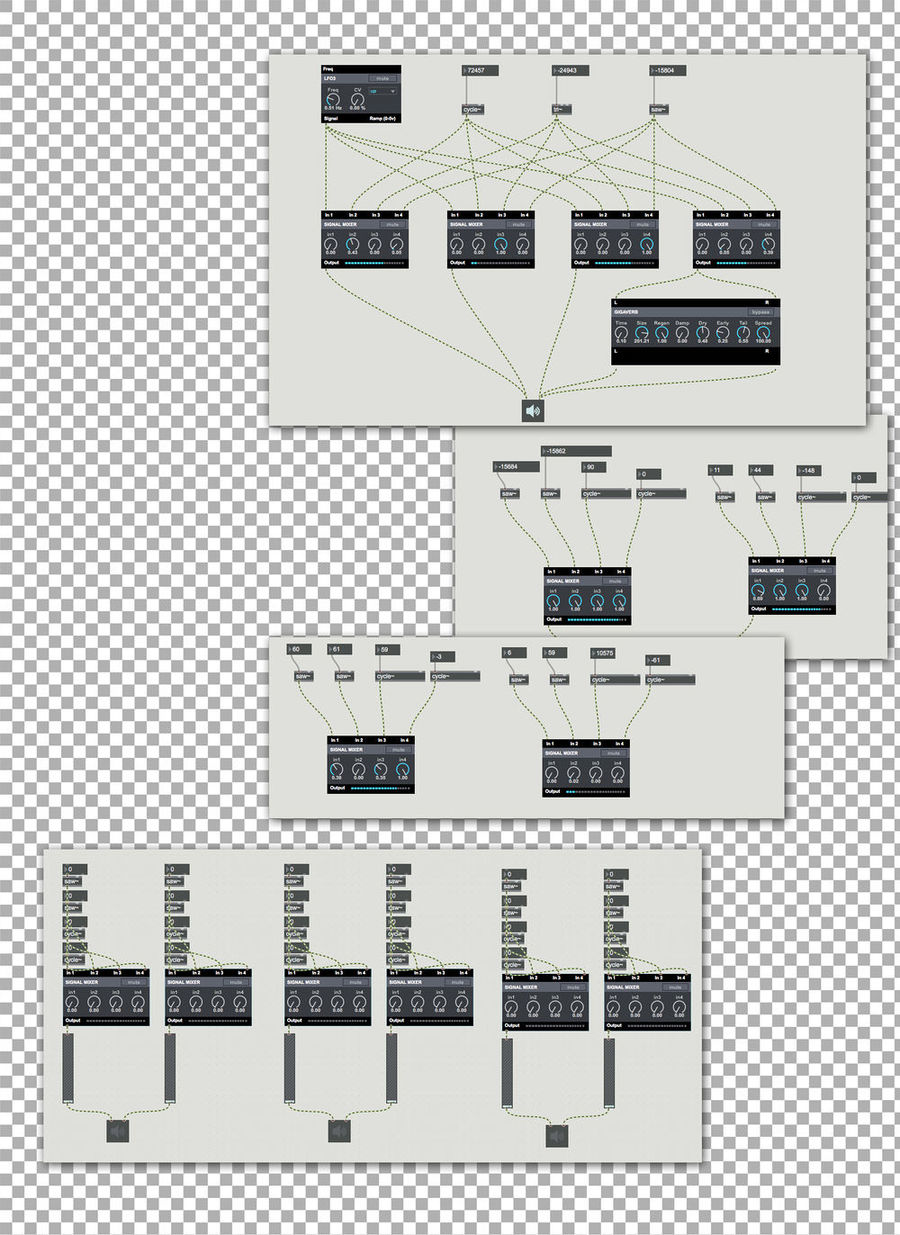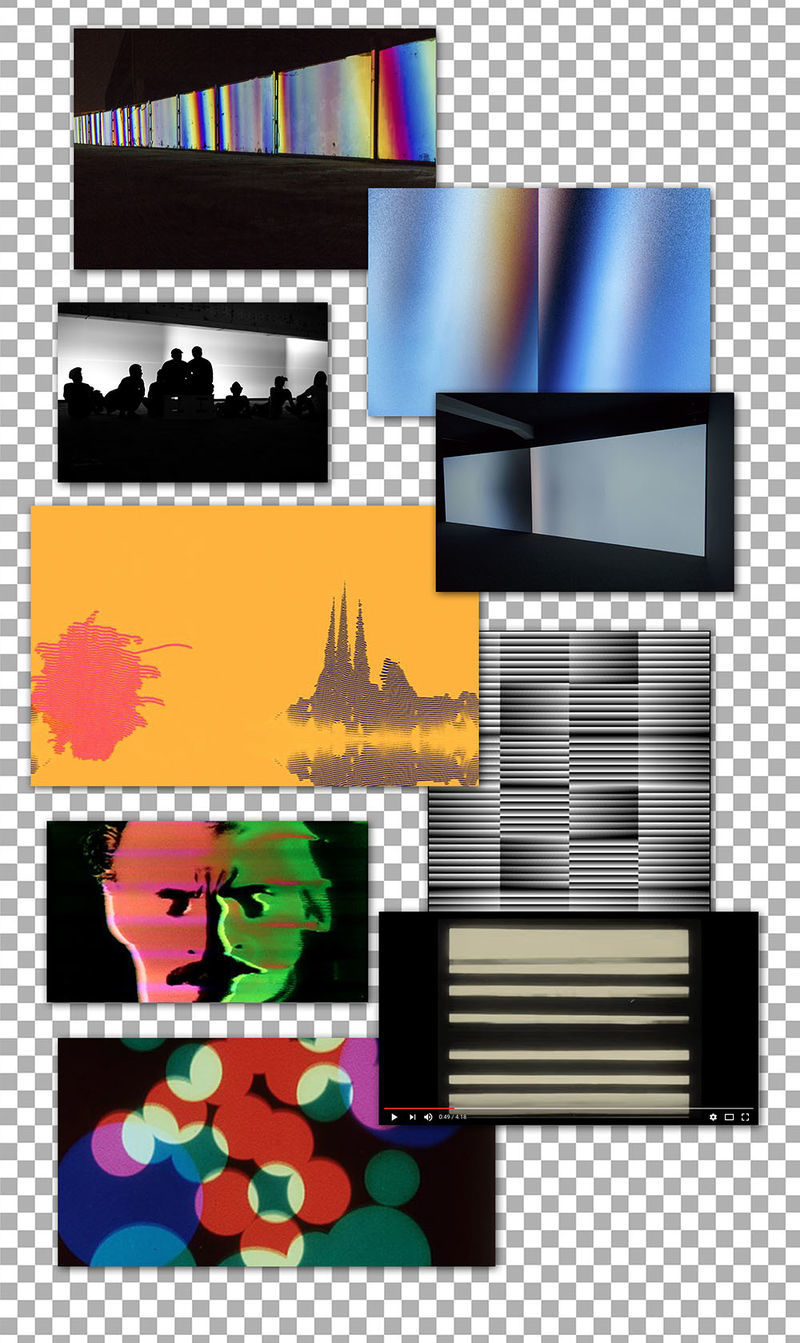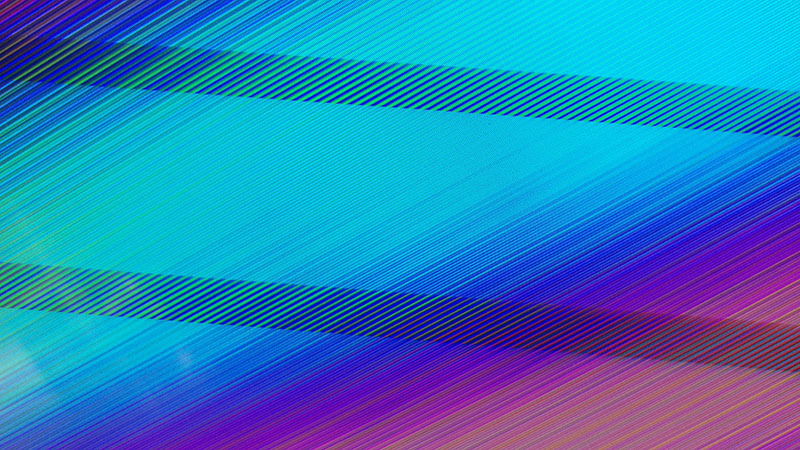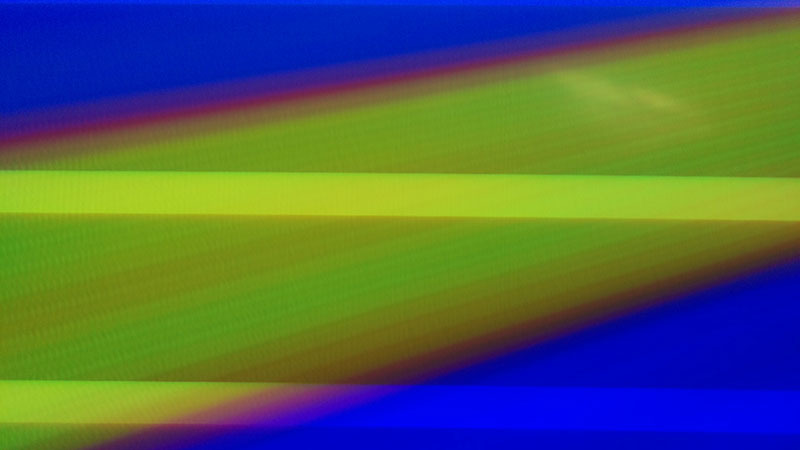User:JeroenRijnart/UTCQ9
Contents
- 1 Projects by others
- 2 Workshop 1
- 3 Navigating Hertzian Space
- 4 Imaginary Radio
- 5 Unravel Radio Marathon
- 6 Sketches Project Q10
- 7 Q10 - Questions about my teammates projects
- 8 Q10 - Project Research: Working with CRT
- 9 Q10 - Project Research: PAL signal
- 10 Q10 - Project Research: VGA signal
- 11 Q10 - Project Research: Frequencies
- 12 Q10 - Project Research: Context
- 13 Q10 - Project Result:
Projects by others
Workshop 1
In the first workshop we made two coils for wireless energy transfer
Scanning for radio frequencies I mostly found:
- Digital signals
- Static interrupted by a high pitched signal
- Echo's of commercial radio
- Machine to machine communication
- More noise
Number stations
"A numbers station is a category of shortwave radio station characterized by broadcasts of formatted numbers, addressed to intelligence officers operating in foreign countries.[1] Most identified stations use speech synthesis to vocalize numbers, although digital modes, such as Phase-shift keying and Frequency-shift keying as well as Morse code transmissions are not uncommon. Most stations have set time schedules, or schedule patterns, however other stations appear to be broadcast at random times. Stations may or may not have set frequencies in the HF band." [Wikipedia]
I've emulated my own numbers station, the code is in hexadecimal numbers.
The code is: 43 6f 6d 6d 65 6e 63 65 20 6f 70 65 72 61 74 69 6f 6e 20 53 74 72 61 6e 67 65 6c 6f 76 65
Imaginary Radio
The nutshell receiver was conceived by Erik K. Hoorn in 2028 to listen to the frequencies affecting trees and plants. There is a direct relationship between microwave-induced structural and chemical modifications of plant species studied. These data collectively demonstrate that human-generated microwave pollution can potentially constitute a stress to the plants. The nutshell receiver is meant to listen in to frequencies surrounding plants and trees as to determine their safety. The receiver itself is of a provisional design meant to be sustainable. It is widely used in agriculture to meet increasing consumer demands.
Unravel Radio Marathon
For the unravel the radio marathon I was in the 'Radio Of Things' group. Our idea was to have two machines talk to each other in a way that's incomprehensible to humans. We wanted to have two harddrives react to each others electromagnetic frequencies. But it turned out that harddrives are very sophisticated pieces of technology, it was quite a challenge to be able to control the rpm of the disks. Luckily we got help from Tim and the MICA teachers, in the end we could control the rpm with a knob hooked up to an arduino. If we had another day we could have built the machines like we planned to, but now we only had one device "talking" and one "listening".
The "finished" installation:
Sketches Project Q10
For the next quarter I'm thinking of doing something with electromagnetic radiation.
I thought of a CRT TV with electromagnets built in behind the screen, a console with turning knobs will let you manipulate individual magnets.
The screen will display a grid that will be warped by the magnets.
Q10 - Questions about my teammates projects
1. What theme are they investigating?
How to modify an image using sound, and how apply this transformation to ourselves?
2. What would be an appropriate question/challenge to answer in this project?
What's the connection between human appearance and sounds?
3. Name an interesting reference project that has yet to be mentioned (what does this work remind you of?)
Boris' project where an image is transmitted through sound and distorted by interference. (Cannot find it on the wiki)
4. In what context do you forsee the final result situated in (commercial product/service, gallery object/installation, public intervention, experimental publication….?
An interactive installation.
5. What weakness or threat should be urgently addressed?
If you want to augment someones appearance live then this could be challenging. (live mapping?)
6. What would you propose as a logical next step?
Talk to Boris
7. What might you be able to offer in terms of expertise/common interest that could be potentially useful for this project.
Any technical stuff concerning hardware I'd gladly look at.
8. How does/could the project connect with radio / electromagnetic spectrum?
This project is about sound and so is radio, but I don't see the link with the electromagnetic spectrum as of yet.
1. What theme are they investigating?
Remotely picking up signals from security camera's
2. What would be an appropriate question/challenge to answer in this project?
To define 'security' in a sense
3. Name an interesting reference project that has yet to be mentioned (what does this work remind you of?)
Stan and Stijn's insecam project from last year. (it's on their wiki's)
4. In what context do you forsee the final result situated in (commercial product/service, gallery object/installation, public intervention, experimental publication…. ?
A device (product) which you can take out in to the world and scan for camera's.
5. What weakness or threat should be urgently addressed?
Almost all security camera's use wifi.
6. What would you propose as a logical next step?
Proof of concept, conduct small scale tests to see if it works.
7. What might you be able to offer in terms of expertise/common interest that could be potentially useful for this project.
Modifying your electronics.
8. How does/could the project connect with radio / electromagnetic spectrum?
You use an antenna to scan for signals/wifi
1. What theme are they investigating?
Non verbal communication through an object/installation
2. What would be an appropriate question/challenge to answer in this project?
How far can you stretch the definition of communication
3. Name an interesting reference project that has yet to be mentioned (what does this work remind you of?)
This reminds me of the 5th dimension scene from interstellar
4. In what context do you forsee the final result situated in (commercial product/service, gallery object/installation, public intervention, experimental publication…. ?
As an interactive installation
5. What weakness or threat should be urgently addressed?
How big is this going to be? Where are you going to build/store/display it?
6. What would you propose as a logical next step?
Proof of concept. Make an experience that demonstrates the effect you are trying to bring.
7. What might you be able to offer in terms of expertise/common interest that could be potentially useful for this project.
Anything hardware related, or conceptual layer.
8. How does/could the project connect with radio / electromagnetic spectrum?
Through the technology, but it could also have a conceptual connection.
Q10 - Project Research: Working with CRT
I've worked with a cathode ray tube in a previous project, when I turned it in to an oscilloscope. I took the four deflection wires coming out of the tube, two for the x axis, two for the y axis, and fed frequencies through an amplifier from my laptop. The frequencies made these lissajous shapes.
Q10 - Project Research: PAL signal
I started out with a CRT TV, the logical first step was to try and recreate a PAL (Phase Alternating Line) signal which is a colour encoding system for analogue television used in broadcast television systems in most countries broadcasting at 625-line / 50 field (25 frame) per second (576i). An Arduino can be used to create a PAL signal with a 2-bit DAC sending out voltages of 0,0 V which will create a new line, 0,3 V which will create a black line and 1,0 V which will create a white line.
By changing the amount of microseconds by which a certain voltage is sent different patterns can be made.
Q10 - Project Research: VGA signal
After reading up on opening and modifying CRT TV's I got a little discouraged, as this is a very dangerous process and I felt I lacked the experience to work with such high voltages. So instead after experimenting with PAL signals the logical next step for me was to try something with VGA signals. VGA stands for Video Graphics Array and is a standard for computer monitors. VGA signals are sent through VGA cables, which have d-sub connectors with 15 pins, 3 of these pins are used for the Red Green and Blue signals, the rest are for ground and two of them are for the horizontal and vertical sync.
I had read of different hacks where audio signals are used to hijack the VGA signal.
I've made two cables that convert audio to video and one that does the opposite.
Cable 1:
Cable 2:
Cable 3:
Q10 - Project Research: Frequencies
At first I used two analog synthesizers as audio source for the VGA cables, but the range proved too limited. That's why I started learning Max MSP, because you have a very high control over the kind of signal you create, and thus a high control over the visuals you create.
Q10 - Project Research: Context
Nowadays VJ's mostly make work that functions as a backdrop for dj's and bands, but there are also visual artists like Tarik Barri and Rainer Kohlberger that make installations and do performances where abstract visuals are the main act. But experimental film has a long history, Nam June Paik made abstract video art in the 1960's as part of the fluxus movement and in the 1920's you had Absolute film where people like Walter Ruttman and Oskar Fischinger already made abstract animations.
Q10 - Project Result:
Synesthesia
Synesthesia is a live performance where the relation between the sound and visuals as materials is made abundantly clear. You can hear the visuals and see the sounds as oscillating frequencies are programmed live.
Still 1:
Still 2:

